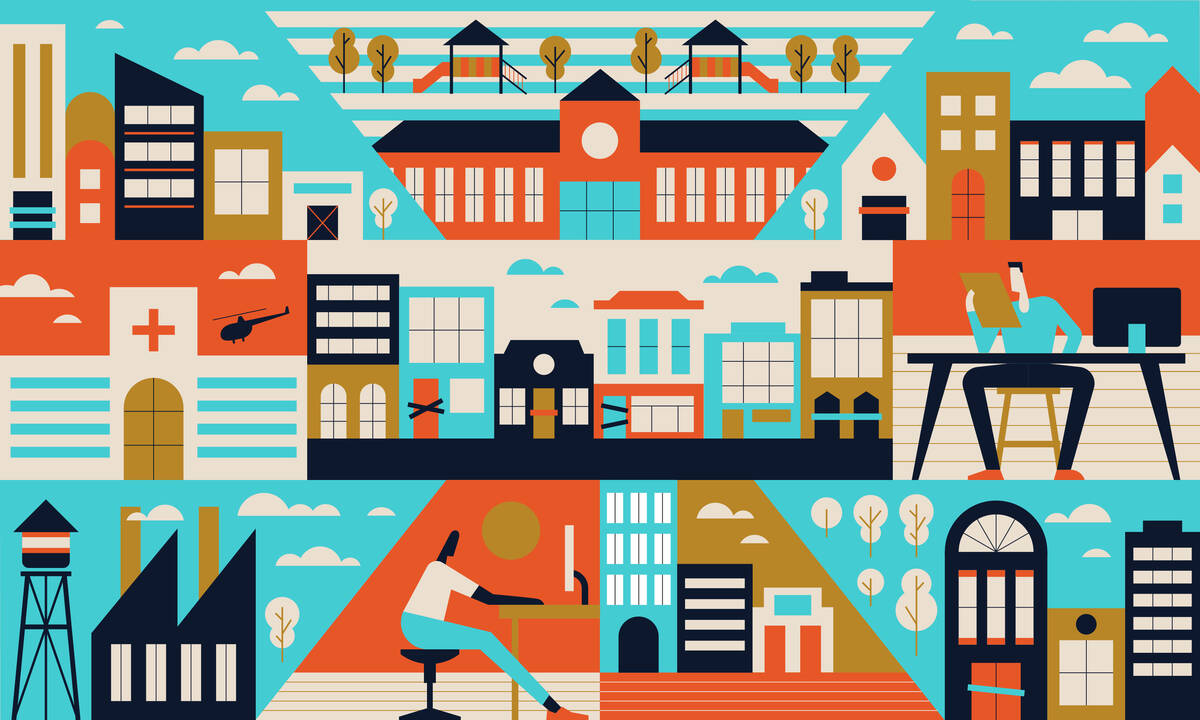Featured Faculty
MUFG Bank Distinguished Professor of International Finance; Professor of Finance; Faculty Director of the EMBA Program

Riley Mann
What exactly is happening in the U.S. economy?
Two years into a global pandemic—with frankly no end in sight—inflation is sky high. Job openings are also at historic levels. And it still takes months to get a couch delivered. So how did we get here, and where might we be headed next?
In a recent The Insightful Leader Live event, Kellogg finance professor Sergio Rebelo offered his take on the latest economic data. Here are 6 takeaways.
Sure, there are plenty of worrisome economic indicators. But in general, the economy is in a much better place than it could be—or likely would have been were it not for lessons that policymakers learned during the Great Recession.
Measures of financial stress peaked in March of 2020 but quickly renormalized as the Federal Reserve frantically worked to stabilize financial markets, rekindling many of the programs such as quantitative easing that Ben Bernanke’s Fed originally put in place more than a decade ago.
“I never thought I would say this, but I’m almost thankful for the 2009 crisis,” says Rebelo. “I think there’s an argument to be made that if it wasn’t for 2009, we probably would be enduring a financial crisis at the same time as the health crisis.”
Of course, government spending comes with a cost: debt. The U.S. is projected to leave the pandemic with public debt at post–World War II levels. And as Baby Boomers continue to retire, pressures on Social Security, Medicare, and Medicaid will force the government to issue even more debt.
Although he worries about this debt accumulation, “I would say it’s not one of my top worries,” says Rebelo. That’s because as long as the economy grows faster than the interest paid on debt, the ratio will eventually normalize. Of course, if capital markets lose faith in the U.S.’s ability to pay back its debt, this could change. But Rebelo sees this possibility as unlikely.
Inflation is currently sitting at 7 percent—a number the U.S. hasn’t seen in decades. There are a number of reasons for this, including the cost of transporting goods around the world and the prices of commodities like lumber and oil. Oil prices, in particular, have been slow to come down. Oil demand dropped in the beginning of the pandemic, sending smaller fracking companies into bankruptcy and ultimately impacting the global supply of oil.
“There’s probably a disconnect between the jobs that are being offered and the jobs that people want.”
— Sergio Rebelo
But Rebelo points out that part of the reason inflation appears to be so high is also because prices fell during the earliest days of the pandemic.
Rebelo explains that we had deflation first and now we have inflation. “A lot of what we’re seeing is just prices going back to normal,” he says.
In fact, he says, overall annual inflation is only up a bit over 4 percent relative to 2019 levels: high, but perhaps not eye-poppingly so.
Employment levels are down 2 percent since 2019, while job vacancies and quits are up to all-time highs. This curious state of affairs likely reflects the fact that, as the economy improves, workers are quitting jobs that aren’t a good fit for them or were perhaps only intended to be temporary.
In addition, thanks to federal relief programs, checking-account balances across all income levels are higher than they were before the pandemic. These balances allow workers to be choosier before accepting their next role.
“People want to look for jobs that suit their skills better or that they like better or that are better paid,” says Rebelo. “There’s probably a disconnect between the jobs that are being offered and the jobs that people want.”
Lower migration flows also contribute to labor-market pressure, says Rebelo. “I think these are things that will sort themselves out, but it’s taking a little bit of time.”
For companies, the pandemic highlights the importance of building resilience into their operations and strategies.
“Efficiency was the code word before Covid. Seventy percent of large corporations used just-in-time production,” says Rebelo.
But massive disruptions to supply chains quickly made evident that efficiency can come at a steep cost. Rebelo offers up the metaphor of the humble cobweb. Spiders exert a lot of energy maintaining their web—some might say an excessive amount—but it’s for a good reason. A rainstorm, an errant rock: the cobweb has enough redundancies to, quite literally, stick around.
Similarly, says Rebelo, companies are likely to think more carefully about their resilience going forward. This rethinking includes improving financial resilience by keeping debt low and cultivating multiple sources of financing; operational resilience by having lower fixed costs, more inventory on hand, and more (and geographically closer) sourcing partners; and strategic resilience by diversifying across strategies and involving a wider range of perspectives during decision-making.
Finally, it’s impossible to talk about the economy without discussing remote work. The shift to remote work is likely to cause several ripple effects, according to Rebelo.
For one, high-wage jobs in law, finance, and management have traditionally been tied to cities. As this tie changes—and indeed, only 25 percent of firms have plans to bring workers back to the office five days a week—not only are these higher-wage workers likely to move out of the city center, but all of the lower-wage service jobs in the urban core that they support are also suddenly in jeopardy. This trend produces what some economists have called a “donut effect”: lower property values and rents in the central business district, surrounded by higher ones in the suburbs.
Jessica Love is the editor in chief of Kellogg Insight.